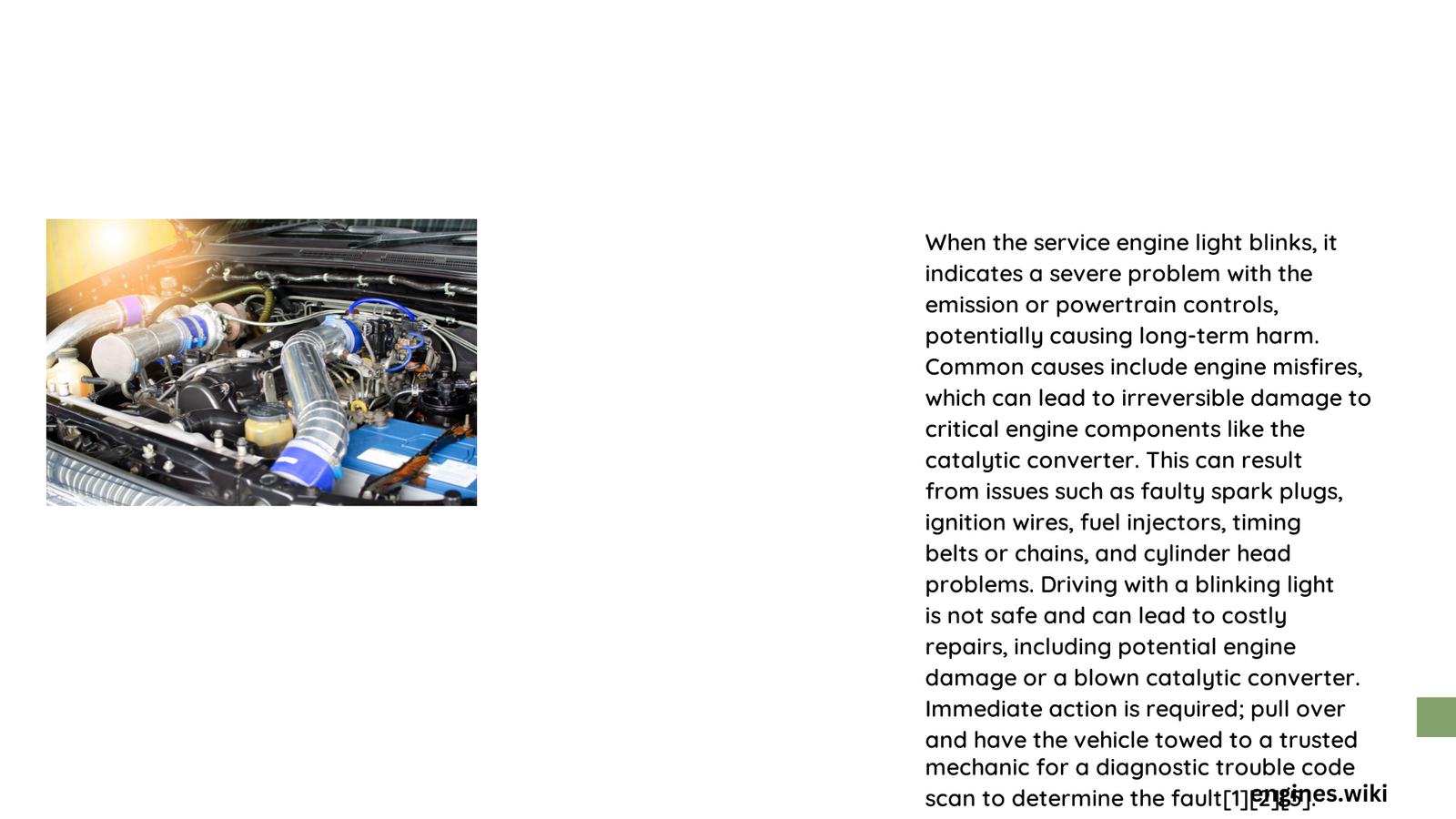A blinking service engine light represents a critical automotive warning signal that demands immediate attention. This urgent indicator suggests severe engine problems that could potentially cause extensive and expensive damage if not addressed promptly. Vehicle owners experiencing this warning must understand the underlying causes, diagnostic procedures, and necessary immediate actions to protect their vehicle’s performance and longevity.
What Causes Service Engine Light to Blink?
Why Do Engine Misfires Trigger Warning Lights?
Engine misfires represent one of the most common reasons for a blinking service engine light. These misfires can occur due to multiple complex factors:
- Spark Plug Degradation: Worn or damaged spark plugs disrupt proper combustion
- Ignition Coil Failures: Electrical component malfunctions preventing consistent spark
- Fuel Injection Problems: Inconsistent fuel delivery disrupting engine performance
| Misfire Type | Potential Cause | Diagnostic Code |
|---|---|---|
| Random Misfire | Multiple Cylinder Issues | P0300 |
| Specific Cylinder Misfire | Individual Cylinder Problem | P0301-P0308 |
What Immediate Actions Should You Take?
When encountering a blinking service engine light, follow these critical steps:
- Reduce Vehicle Speed: Minimize engine stress by driving conservatively
- Avoid Aggressive Acceleration: Prevent additional strain on compromised systems
- Pull Over Safely: Find a secure location to assess the situation
- Use OBD-II Scanner: Retrieve diagnostic trouble codes for precise identification
How to Diagnose Potential Problems?
Comprehensive diagnostic procedures involve:
- Visual Component Inspection: Check electrical connections, hoses, and visible damage
- Sensor Evaluation: Test oxygen, mass airflow, and temperature sensors
- Systematic Troubleshooting: Methodically examine fuel, ignition, and emission systems
What Are Potential Repair Costs?
Repair expenses can vary significantly based on the underlying issue:
- Minor Repairs: $100 – $500 (Sensor replacement, spark plug maintenance)
- Moderate Repairs: $500 – $1,500 (Fuel system components, ignition system)
- Major Repairs: $1,500 – $4,000 (Catalytic converter, extensive engine work)
Can You Prevent Future Service Engine Light Issues?
Preventative maintenance strategies include:
- Regular scheduled vehicle servicing
- Timely replacement of wear-and-tear components
- Using high-quality fuel and lubricants
- Addressing minor issues before they escalate
Expert Recommendations

Professional mechanics emphasize the importance of:
- Immediate Response: Never ignore a blinking service engine light
- Professional Diagnosis: Consult certified automotive technicians
- Comprehensive Evaluation: Understand the complete diagnostic report
Warning Signs Requiring Immediate Attention
Watch for these additional symptoms accompanying a blinking service engine light:
- Unusual engine noises
- Significant power loss
- Rough idling
- Excessive vibration
- Decreased fuel efficiency
Conclusion
A blinking service engine light represents a critical warning that demands immediate, informed action. By understanding potential causes, diagnostic procedures, and taking prompt steps, vehicle owners can mitigate potential damage and maintain their vehicle’s optimal performance.
Reference:
– OBD-II Codes Explained
– Automotive Diagnostic Guide
– Vehicle Maintenance Resources
